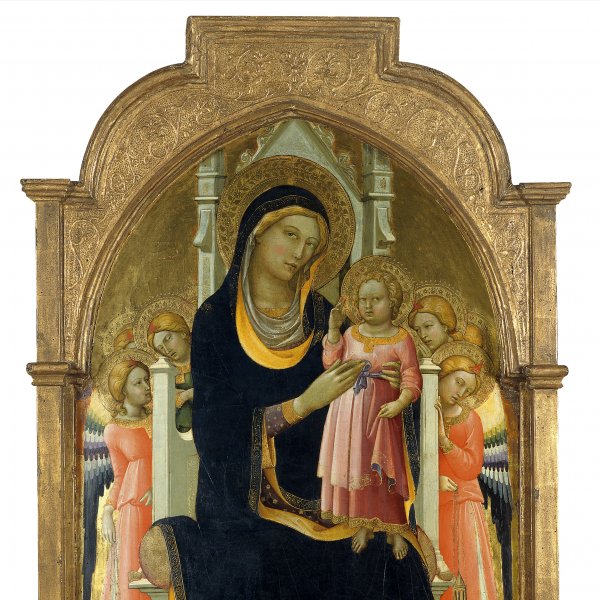Lorenzo Monaco
(?), 1370/75 -Florence (?), 1425/30
A painter, illuminator and draughtsman, Piero di Giovanni took on the name of Lorenzo when he entered the Camaldolese Order in the monastery of Santa Maria degli Angeli in Florence. His place of birth is unknown, but it is thought that he may be Sienese and it would seem that he trained with Agnolo Gaddi and as an illuminator in the scriptorum of Santa Maria degli Angeli. During his early years of monastic life Lorenzo Monaco illuminated a large number of manuscripts. By 1401 he was working outside the monastery and had set up his own workshop. His works are characterised by their sinuous lines, uniform, subtle combined colours and gentle faces, while his painting reveals the clear influence of his master and of Niccolò di Pietro Gerini and Gherardo Starnina. Lorenzo Monaco was one of the leading figures of the International Gothic style, combining the legacy of Giotto with the Sienese tradition, while also alert to innovations in 15th-century Florentine painting. Notable works include the San Gaggio Polyptych of around 1387–88 (now divided between the Galleria dell’Accademia, Florence, the Courtauld Institute, London, and other collections). At the end of the 15th century he painted various altarpieces including a polyptych for the Carmelite monastery in Florence, while a slightly later work is the Christ as the Man of Sorrows of 1404 (Galleria dell’Accademia, Florence). The only documented work by the artist to have survived is the Monte Oliveto Altarpiece, dated 1406–10, while Lorenzo Monaco’s most famous, and only signed work is The Coronation of the Virgin, painted in 1413 for the altar of his monastery (Galleria degli Uffizi, Florence). Around 1420, during the last phase of his career, the artist painted the frescoes for the Bartolini Salimbeni chapel in Santa Trinità in Florence, and the Annunciation Altarpiece, also in that chapel. Lorenzo Monaco died around 1425–30, leaving a Descent from the Cross unfinished (Museo di San Marco, Florence), which was completed by Fra Angelico, who was notably influenced by Lorenzo’s style.





